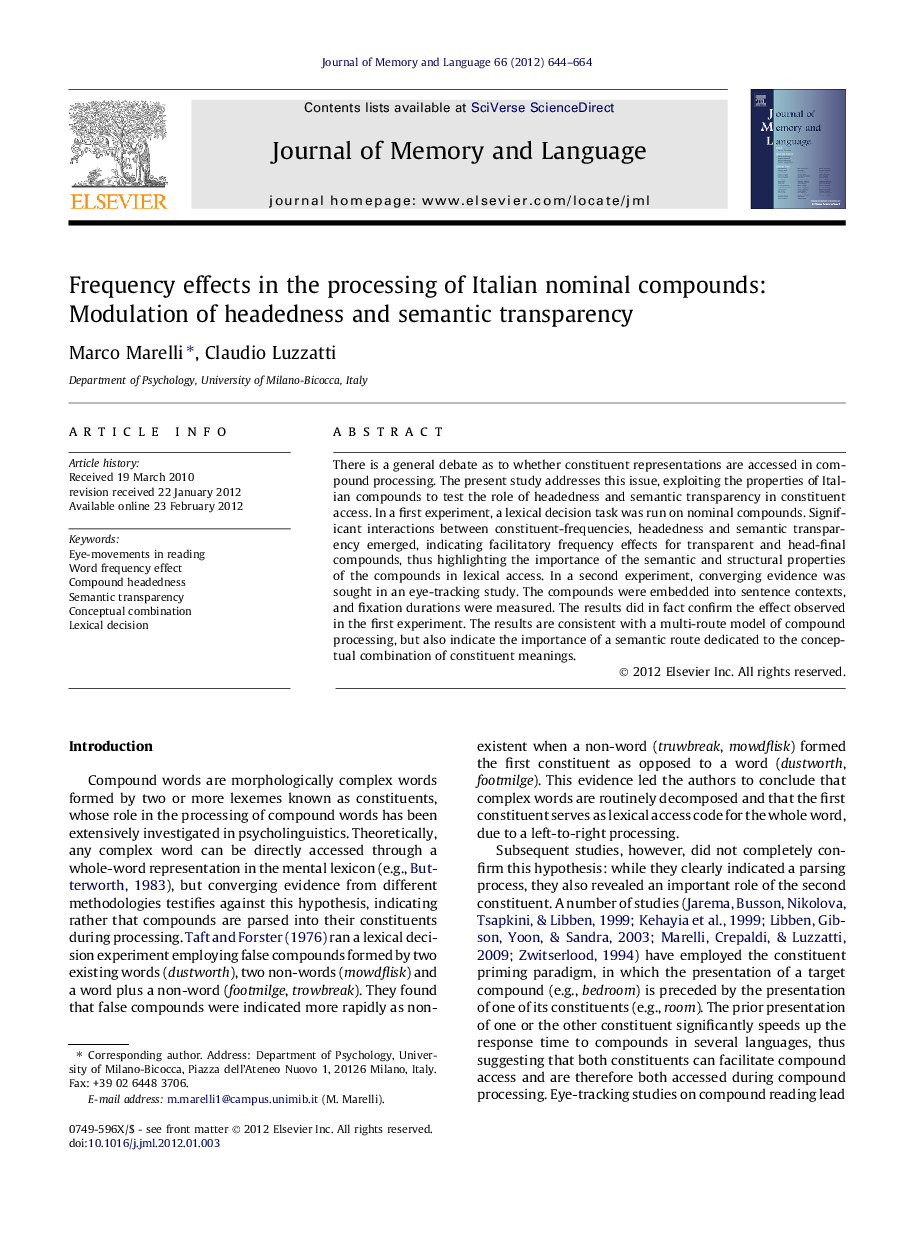| Article ID | Journal | Published Year | Pages | File Type |
|---|---|---|---|---|
| 931939 | Journal of Memory and Language | 2012 | 21 Pages |
There is a general debate as to whether constituent representations are accessed in compound processing. The present study addresses this issue, exploiting the properties of Italian compounds to test the role of headedness and semantic transparency in constituent access. In a first experiment, a lexical decision task was run on nominal compounds. Significant interactions between constituent-frequencies, headedness and semantic transparency emerged, indicating facilitatory frequency effects for transparent and head-final compounds, thus highlighting the importance of the semantic and structural properties of the compounds in lexical access. In a second experiment, converging evidence was sought in an eye-tracking study. The compounds were embedded into sentence contexts, and fixation durations were measured. The results did in fact confirm the effect observed in the first experiment. The results are consistent with a multi-route model of compound processing, but also indicate the importance of a semantic route dedicated to the conceptual combination of constituent meanings.
► Constituent frequency effects in Italian compound processing are investigated. ► The modulation of headedness and semantic transparency is studied. ► Frequency effects are mainly facilitatory for transparent and head-final compounds. ► Consistent effects on lexical decision latencies and fixation durations in reading. ► Constituent meanings are semantically combined during processing.
